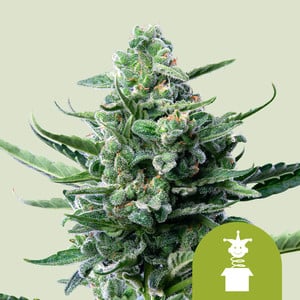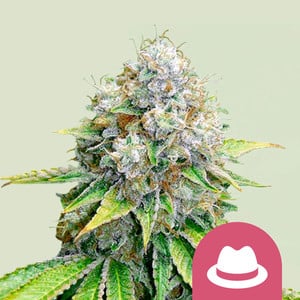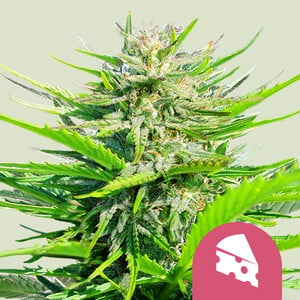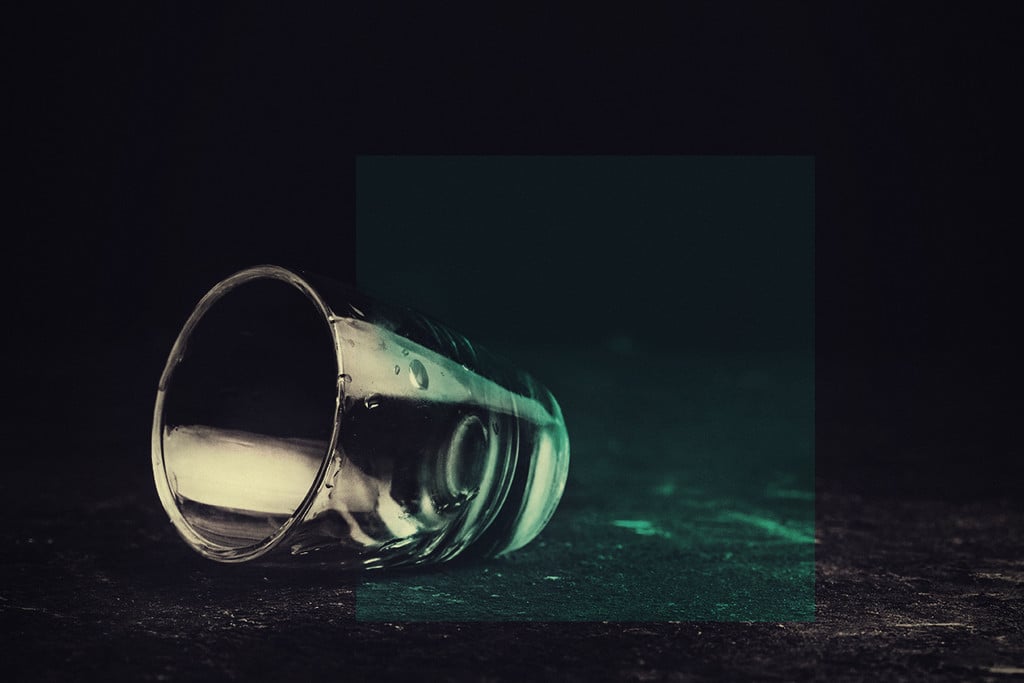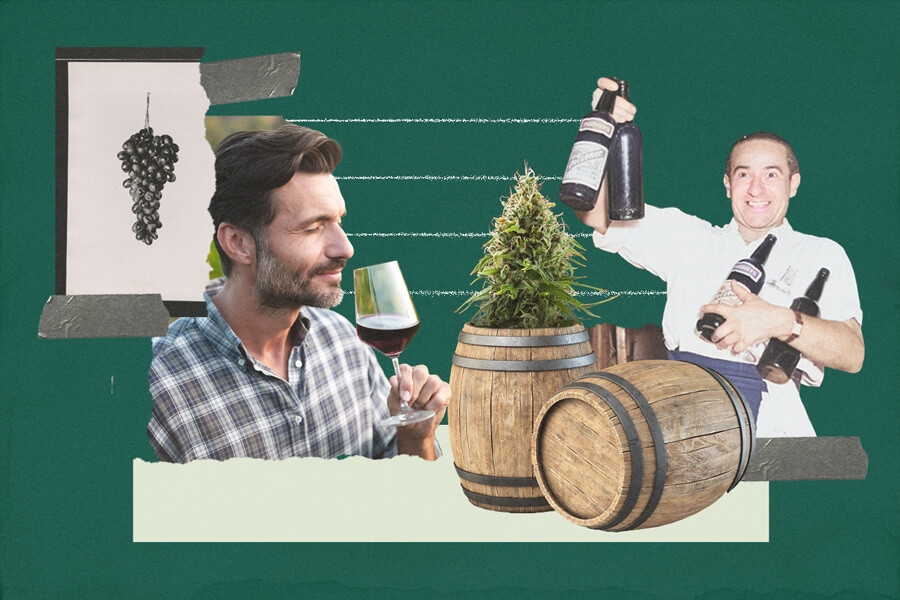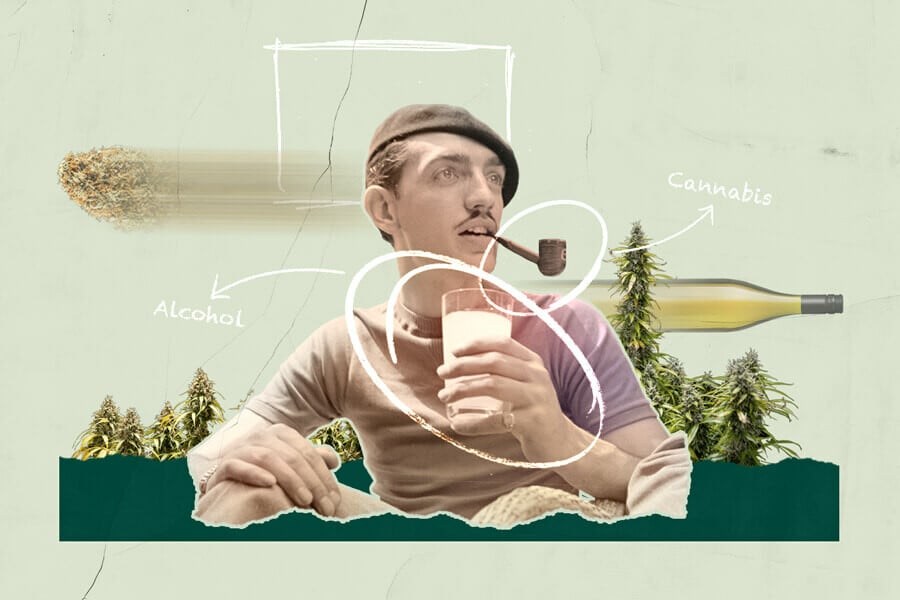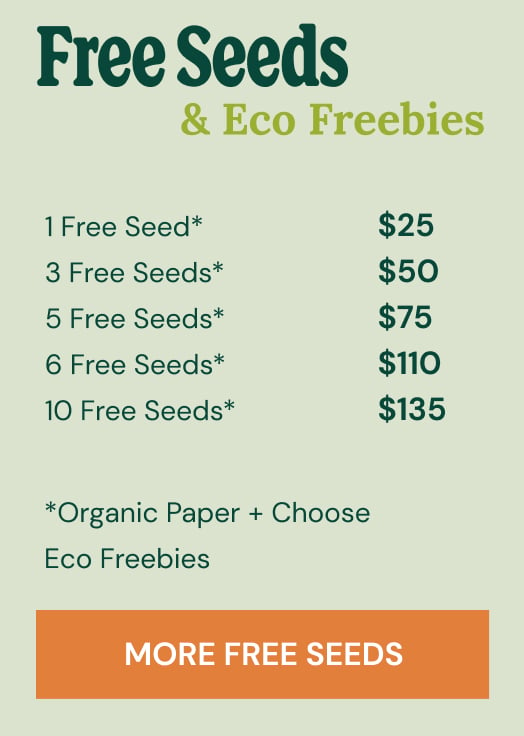.
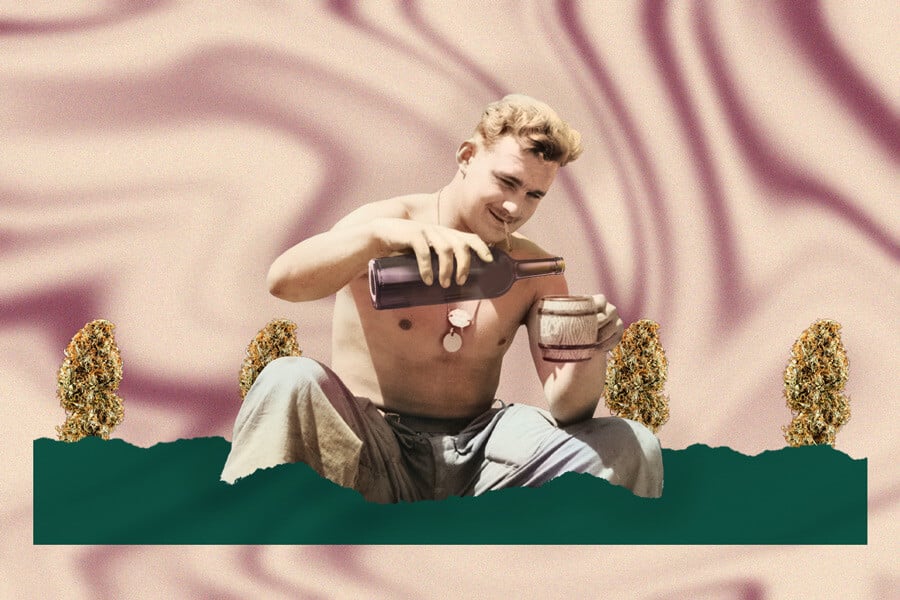
How to Pair Cannabis and Wine
Wine and weed can pair well in terms of both flavour and effects, and the results can be very special. While there are no hard rules about pairings—if it tastes good, it is good—knowing more about the compounds and ideas behind wine pairing can help you make informed, tasty decisions.
Are you a weed and wine enthusiast? Want to pair the two together for a truly indulgent night in? Well, there are many great pairings out there, and experimenting with all of the different possibilities can be a joy.
Below, we look into pairing weed and wine, investigating the compounds in both and reviewing some important considerations regarding using the two in conjunction.
Contents:
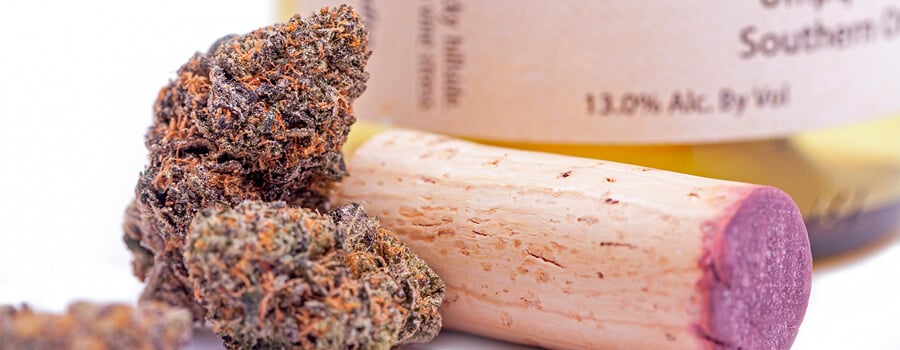
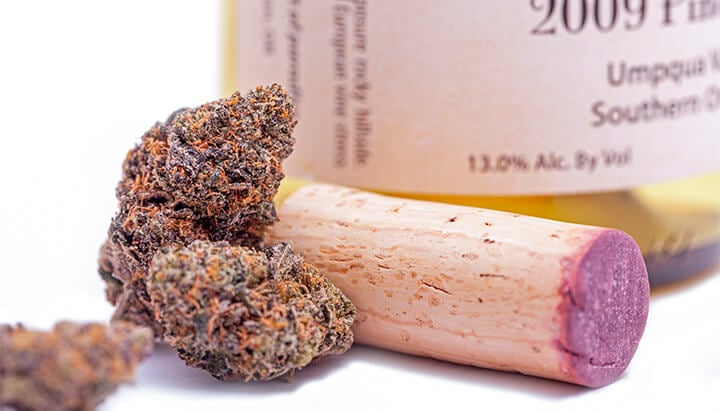
Terpenes and Other Compounds in Weed and Wine
When it comes to the aroma and flavor of both cannabis and wine, chemicals known as terpenes play a significant role—alongside a variety of other aromatic compounds, including volatile sulphur compounds (VSCs) and esters.
Terpenes are found in many plants and even animals, and emanate a variety of sweet, floral, and herbaceous scents that can be detected in weed, beer, and wine. The floral notes in good Moscato and the citrus zing in Sauvignon blanc, for example, derive from terpenes. In the natural world, terpenes serve a range of purposes, from warding off predators to influencing precipitation.
In cannabis, terpenes are perhaps the most influential to a strain’s overall aroma and flavor. For cannabis users, terpenes serve two purposes:
- To create an almost infinite variety of flavors
- To influence the effects of cannabinoids
The terpenes in marijuana, of which there are well over 100 across the species, can create flavors that span the sweet and savoury. Everything from a classic citrusy taste to more novel flavors of cheese, candy, and petrol can be experienced depending on the strain in question. It’s worth noting that the skunky, cheesy, onion-y flavors in some cannabis cultivars are due to the presence of VSCs, which combine with terpenes and esters to offer a complex palate.
Terpenes also play a major role in influencing the flavor and aroma of wine, working alongside other molecules, such as sugars, yeasts, esters, pyrazines, thiols, lactones, and Botrytis cinerea, to produce a rounded flavor profile.
In wine, ester compounds provide the building blocks of fruity flavors, pyrazines transfer their herbaceous scents, thiols offer a bittersweet taste with berry notes, and sulphur compounds give a fine mineral taste to Chablis.
Why Pair Wine With Weed?
Whether to experience their combined effects or their combined flavors, pairing weed and wine can be an enjoyable, novel experience. There are cannabis and wine pairings that can elevate and refresh you when the sun is at its zenith, and that can warm and soothe you when it's at its nadir.
Cannabis and wine can both exhibit a surprisingly broad spectrum of flavors and effects, and if you learn to pair these together well, then your palate, brain, and body are in for a treat.
The Art of Wine Pairing
Pairing a wine with food, or a strain of cannabis for that matter, needn’t be difficult. Before we go any further, rest assured that if it tastes and feels good, then you’ve paired it well. While you can (and we will) go into more depth about the refined art of pairing wine with weed, let’s first do away with preconceptions about doing things “properly”. There’s no need to cover up our enjoyment of blazing and sipping with pretension. It’s all about enjoying yourself.
With that out of the way, it is also true that certain wines, with their particular flavors and mix of compounds, tend to pair better with certain strains. Let’s delve a little deeper.
Matching Compounds, Flavors, and Aromas
As mentioned, both cannabis and wine contain a range of terpenes and other chemicals that contribute to their flavors and aromas. When you buy a bottle of wine, there will most likely be flavor notes listed somewhere on the bottle, and these will indicate what to expect, and probably suggest food pairings too. So far so good.
But depending on how you source your weed, you may or may not know which terpenes it contains. No matter! You have olfactory senses after all. Give your weed a smell. With your nose, you may not be able to figure out the exact terpene ratios, but you’ll be able to tell what it smells like. If it’s fresh and citric, then it’s likely to pair better with a white wine, or something sweeter. Perhaps even something fizzy. If it’s dark and broody, with spicy undertones, it’s more likely to pair well with a red wine, or perhaps a dessert wine.
Likewise, a pungent strain with diesel or glue notes might be too much when paired with an acidic white. Perhaps try to counteract the extremes of one with the mellowness of the other.
The list could go on indefinitely, but finding complementary pairings between the flavors and aromas of your cannabis and those of your wine will help to ensure that the two support, rather than contradict, one another.
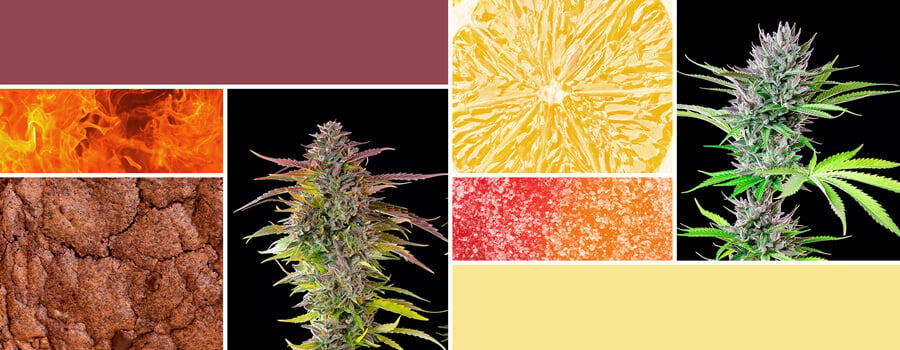
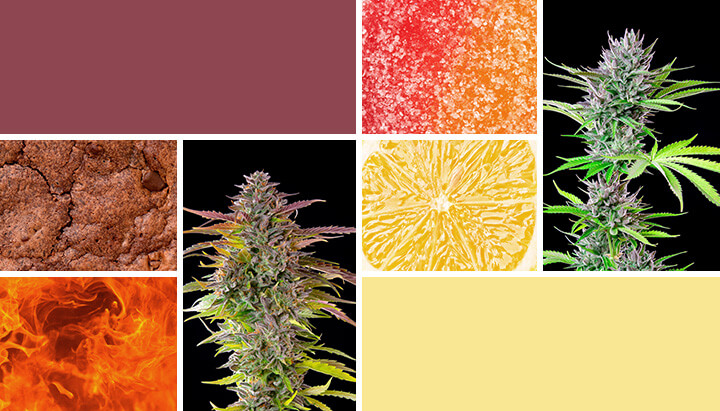
Consumption Method
You should also take into consideration how you plan to consume your cannabis, as this will affect both the flavors and your ability to experience the flavors.
For instance, smoking a joint might pair well with a dark red wine. But the tarry flavors of burnt weed and tobacco will be more abrasive alongside a fragrant, airy white. Vaporizing cannabis preserves the pure flavors of terpenes much more effectively, and is far more suitable for lighter wines.
What’s more, that classic bong smell that most stoners know—it won’t pair well with wine. If you’re settling in for an evening of revelling in the subtle delights of your palate, certainly stay away from all but the cleanest of bongs.
Moderation Is Key
When pairing wine and food, you needn’t give much consideration to how the effects of the two will match, aside from wondering how tired you’ll be after eating. But when it comes to using cannabis and wine together, be aware that you’re pairing two psychoactive substances, which can influence each other in positive and negative ways.
The main consideration has less to do with pairing and more to do with restraint: consume in moderation! Seriously, a few sips and a few tokes will be plenty to start with. That said, try to consume the two in close proximity, so you can experience their flavors and effects in tandem. The worst thing you can do is drink a lot of wine and then smoke weed. In fact, you should consume weed near the beginning of your session, as this tends to help you control your desire to drink too much alcohol.
Pairing Indicas, Sativas, or Hybrids With Wine
Otherwise, think about the effects you’re after. If you want to relax, a deep red with a heavy indica is a perfect pairing. If you want to be social, then a white with an energetic sativa will work well. Certain wine and weed combinations might send you in two directions at once, which can be uncomfortable.
Note: Indica, sativa, and hybrid are commonly used terms when referring to cannabis. Ultimately, they refer more to the growing characteristics and genetic history of a plant, and do not always accurately describe a strain’s effects. While, on the whole, sativas tend to be more energising, and indicas more sedative, these are not hard rules; you should assess each strain on its own merits.

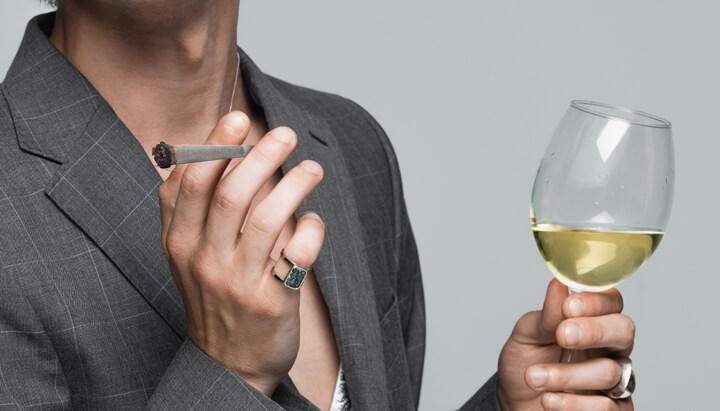
5 Popular Cannabis and Wine Pairings
Now that you know a little more about it, here are five popular cannabis and wine pairings to give you some ideas.
1.Sparkling Wine and Haze
Sparkling wines (prosecco, Champagne, cava, etc.) range from sweet to sour, but are always light, energising, and floral. As such, they tend to be best paired with strains that have similar effects.
Haze strains, particularly Lemon Haze, go very well with sparkling wines, as they are energetic and the citrusy flavors match well with those of sparkling wines. This combination not only tastes great, but makes a perfect duo for social events and parties—you’ll remain cognisant and talkative, so long as you don’t overdo it!
2.Dry White and Lemon Kush
Pairing a dry white with a Lemon Kush hybrid works wonders. The dry white lends itself to a range of situations, from social gatherings to relaxing nights in—and so does Lemon Kush.
In terms of flavor, both exhibit a lightness and freshness, but the Lemon Kush also has something a little deeper that helps to ground the experience and make it a little more holistic. In the same way, while Lemon Kush is not a knockout strain, it tends to be quite relaxing and complements the lightness of a dry white well.
3.Rosé and Jack Herer
Rosé is quite the party drink, and Jack Herer is a motivating and energising hybrid that suits it well. In terms of flavor, the two actually contrast, but in a way that many consider complementary.
Rosé generally has a sweeter flavor, though dry ones are also available. Nevertheless, it is most often light and floral. Jack Herer, on the other hand, while having some light Haze notes, also exhibits piney and spicy flavors. This goes well with rosé as it deepens the experience and complements the lighter, airier flavors. In terms of effects, they’re both about energy and socialising. If you want a relaxing night in, another pairing might be more suitable.
Royal Jack Auto
|
|
Jack Herer x Ruderalis |
|
|
12 to 14 oz/m² |
|
|
1 to 3 feet |
|
|
7 - 8 weeks |
|
|
THC: 16% |
|
|
Sativa 40% Indica 30% Ruderalis 30% |
|
|
2 to 4 oz/plant |
|
|
2 to 3 feet |
|
|
11 - 12 weeks after sprouting |
|
|
Creative, Motivating |
4.Medium Red and OG Kush
Medium reds are fairly dark, floral, and even spicy. These wines are generally warming, lending themselves to more relaxed environments. OG Kush is also dark and spicy, with notes of fuel and skunk. Its effects are strong and balanced, but lean more towards relaxation.
In combination, the two pair well in terms of flavor and effects. On the whole, they are more suitable for lowkey endeavours, though these may well still be social. But the pairing can also work well for a quiet night in.
OG Kush
|
|
Chemdawg x Lemon Thai x Pakistani Kush |
|
|
15 to 17 oz/m² |
|
|
3 to 5 feet |
|
|
7 - 9 weeks |
|
|
THC: 19% |
|
|
Sativa 25% Indica 75% |
|
|
18 to 19 oz/plant |
|
|
6 to 7 feet |
|
|
October |
|
|
Calming, Uplifting |
5.Dessert Wine and Cheese
What better combination is there than wine and cheese? If you want to mix the sweet with the savoury, consider a syrupy dessert wine and a dank Cheese strain.
The main danger is that the balance is so good that you might find it difficult to stop indulging! If you want to chill with friends after a dinner party, or snuggle up with a partner, it doesn’t get better than this.
Royal Cheese (Fast Flowering)
|
|
Old School Skunk x Afghani |
|
|
16 to 19 oz/m² |
|
|
2 to 3 feet |
|
|
7 - 8 weeks |
|
|
THC: 17% |
|
|
Sativa 40% Indica 60% |
|
|
19 to 21 oz/plant |
|
|
4 to 7 feet |
|
|
Early October |
|
|
Balanced, Clear, Stoned |
Buy Royal Cheese (Fast Flowering)
Weed and Wine Is (Almost) Always a Good Time
Cannabis and alcohol can pair very well in moderation, but the pairing can also leave you unwell and disinhibited, so be careful. If you’re not experienced in using these two drugs in conjunction, then start slowly until you understand how they work together.
But once you do, you can have a wonderful time pairing wine and weed. A true delight for the senses!


























